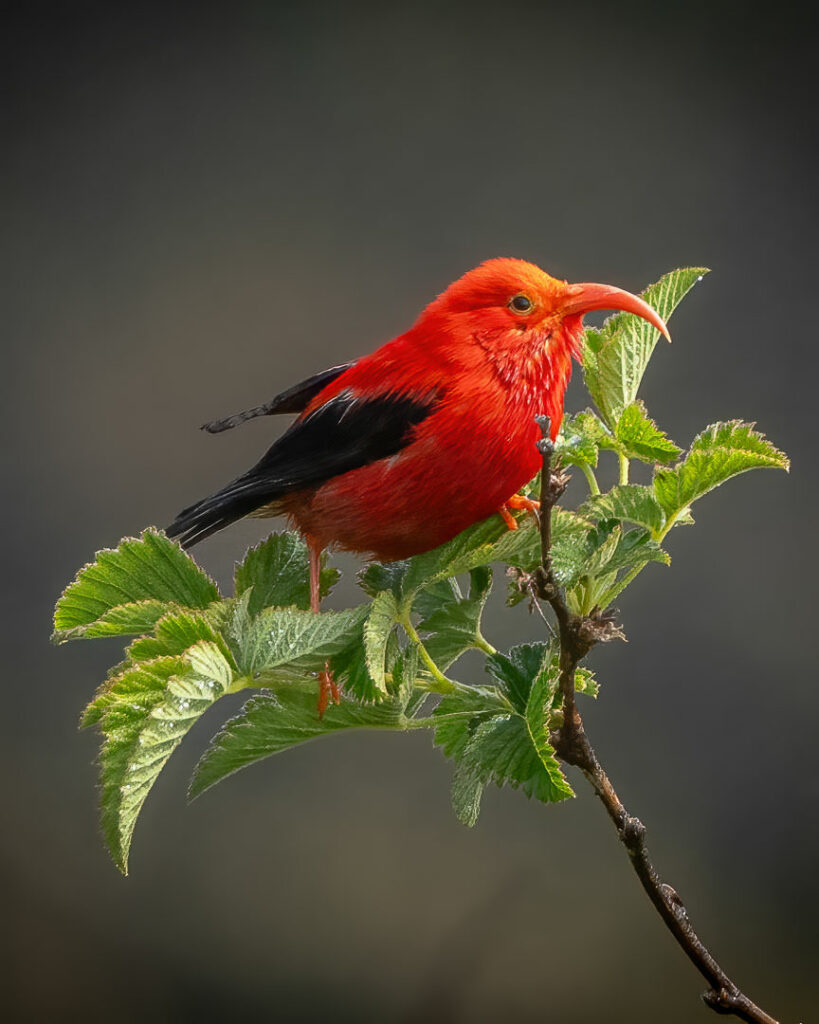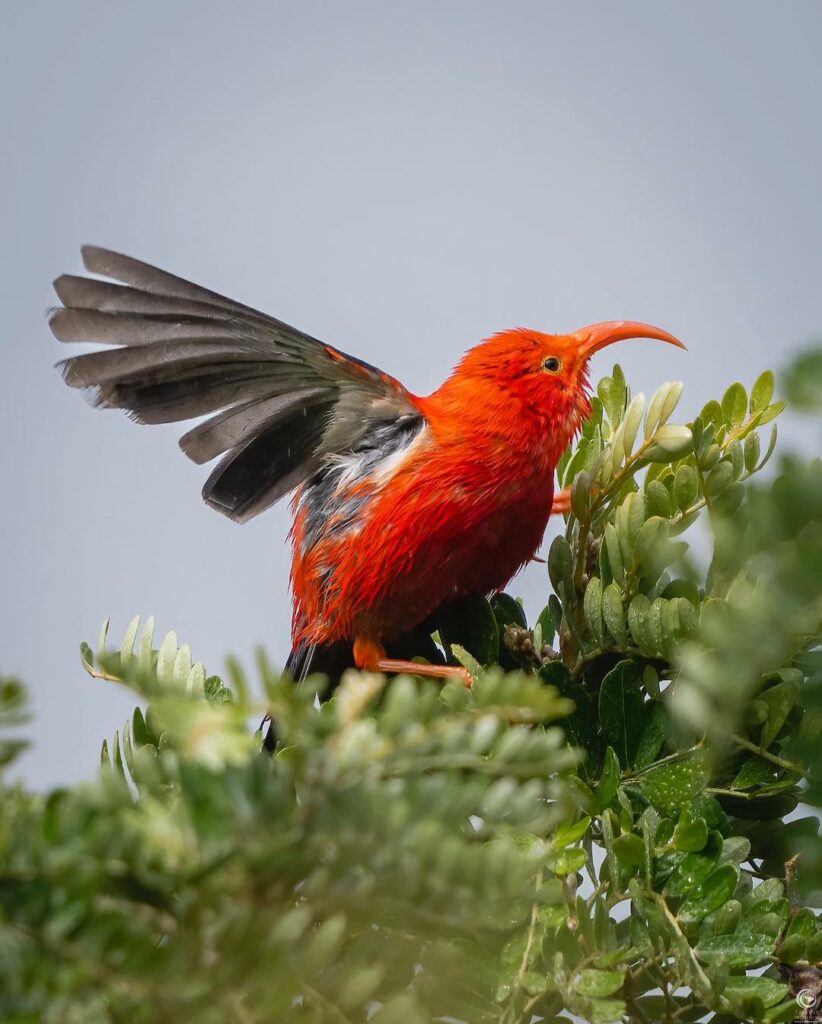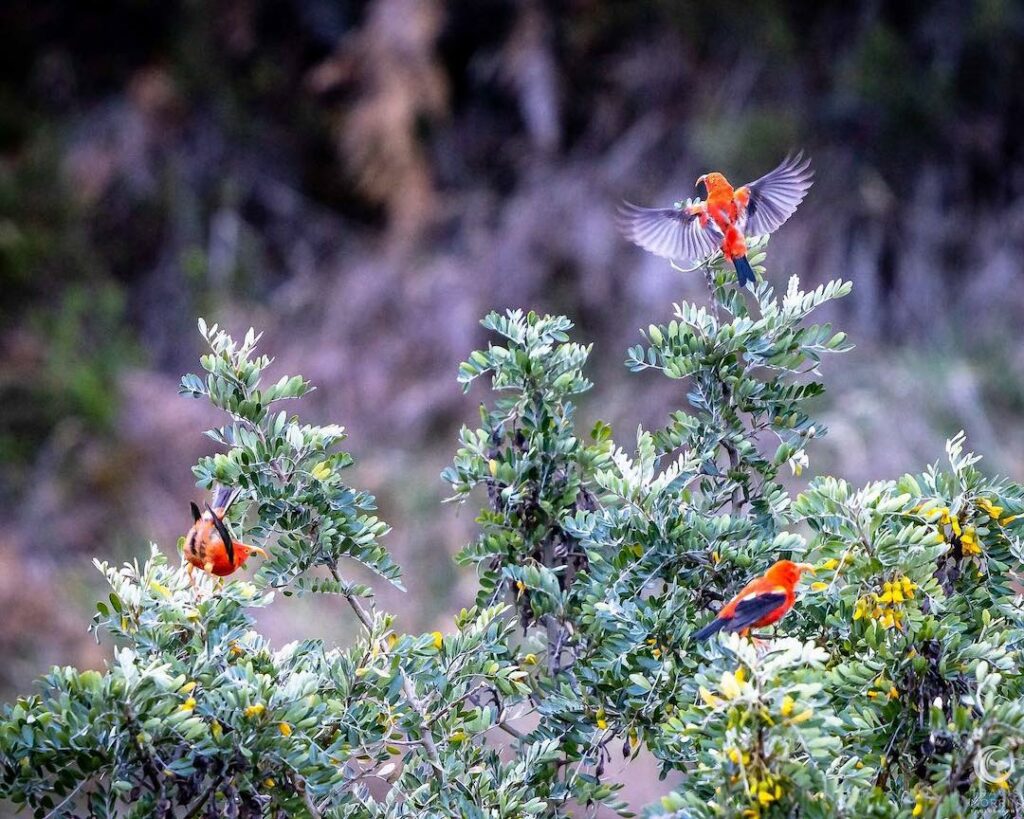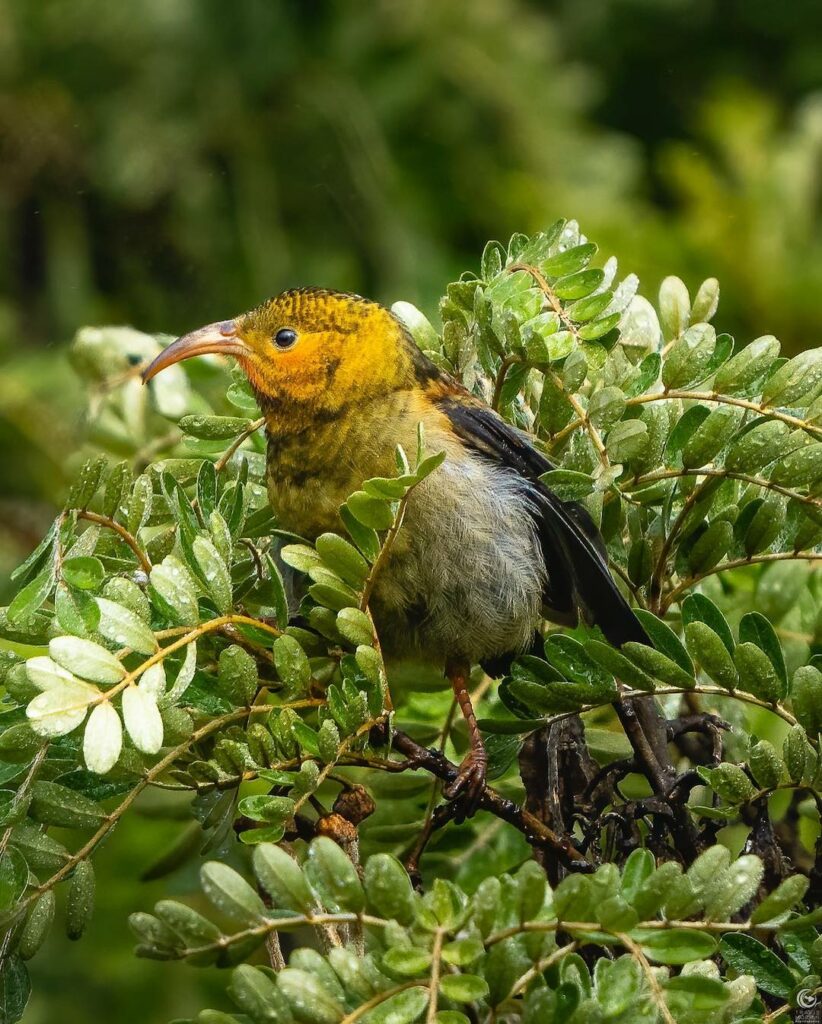
Wildlife photography is an art all its own, and I’ve only just started to dabble in it. Thankfully, I’ve got a killer Sony zoom lens that allows me to keep a respectful distance, but capture some pretty incredible detail of our earth’s creatures in action.
One of my favorites? The stunning ‘I’iwi bird, which is native to Hawai’i and found nowhere else on earth. So grateful to catch these beauties in action up at Hosmer Grove on the slopes of Haleakalā, and I wanted to big into the history a bit.
Legendary Feathered Friends

Forest birds play a role in Hawaiian mythology, known to be a favorite of the demi-god Maui. According to legends via @mauiforestbirds the ancient Hawaiians could hear the sweet songs of the forest birds but couldn’t see them. Maui was the only one who could see their bright colors and brilliant plumage, until one day he decided to lift the veil and reveal these stunning birds for everyone to see!
Early Hawaiians considered their native birds’ red colors to be sacred and used ʻIʻiwi and other honeycreeper feathers to create elaborate cloaks, helmets and lei worn only during battle or in special ceremonies, explains American Bird Conservancy.
Kia manu (bird catchers) trapped forest birds in large numbers, since thousands of feathers were needed to make a single cloak. However, most took only a few feathers from each bird, releasing them back into the wild to preserve the precious resource.
Fewer ‘I‘iwi to Enjoy

Back in the day, ʻIʻiwi were on all of the main Hawaiian islands. Now, most live in higher-elevation forests at 4,300 to 6,200 feet on Maui, Hawaiʻi, and Kauaʻi, with remnant populations on Oʻahu and Molokaʻi. Many Hawaiian birds have gone extinct, so I’m glad the ‘I‘Iwi is hanging on. However numbers are declining, due in large part to widespread habitat loss.
The bird’s long, downward-curving bill is specialized for probing tubular native lobelia and mint flowers to reach their nectar, however there are fewer of those plants these days. So ‘I‘iwi often feed on the nectar of native ʻōhiʻa lehua — they also eat spiders, moths and other bugs — and live in those higher-altitude forests, where they’re more protected from predators and mosquitoes (‘i’iwi have no immunity to avian malaria and pox).
However, as ABC Birds explains, “like another red Hawaiian honeycreeper, the ʻApapane, the ʻIʻiwi is an altitudinal migrant, following blooms of nectar-producing plants up and down mountain slopes throughout the year. This behavior can be risky for both species as they move to lower elevations and come into contact with disease-carrying mosquitoes.”
‘I‘iwi Family Facts

Peak breeding season runs from February to June. Both the male and female build the nest, fashioned from twigs, ferns and lichen, high in the crown of a native tree.
Juvenile ʻIʻiwi look very different from the grown-ups. They’re mottled with black and yellow-brown feathers, but soon molt into that unforgettable bright scarlet-and-black adult plumage.
The song of the ʻIʻiwi is pretty unforgettable — ABC Birds describes it as “a unique collection of whistles, sometimes compared to balloons rubbing together, or a squeaky hinge” and you can even have a listen here!
If you’re fortunate to glimpse these special birds, they are a special sight (and sound)!! And if you’d like to see some other feathered friends that hang in the high elevations of Maui, check out Haleakalā: House of the Sun, Home in my Heart.
